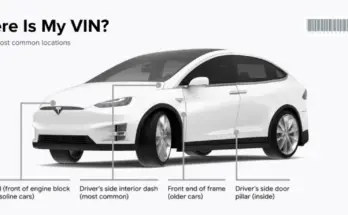When it comes to exploring Cleveland, there are many things you have to do. While you are there, don’t miss the Terminal Tower, The Lakefront, or The Indians. If you haven’t already, you must do so! You can learn more about Cleveland by reading this article. Here, we will highlight some of the highlights of the city. Also, read up on the history of the city and its many landmarks.
The Terminal Tower
The Terminal Tower in Cleveland is a 52-story landmark skyscraper that is located on Public Square. It was constructed during the skyscraper boom, and is one of the most famous buildings in the area. When completed, it was the second-tallest building in the world. It still stands as a symbol of downtown Cleveland. This skyscraper was built by the Bank of America Corporation. When you visit, you can get a bird’s-eye view of downtown Cleveland.
Its design was to resemble a city within a city, with a shopping concourse, an observation deck, and concessions for the Fred Harvey Company. It was built on the site of an old hotel, and was the inspiration for the current Rockefeller Center in New York. The Van Sweringen brothers were responsible for the Terminal Tower’s design, though they did not attend the dedication ceremony, spending instead a day at Roundwood Manor in the countryside.
The Terminal
The Terminal in Cleveland was the first facility built after World War II. It was designed as a midwestern transit hub and contained 21 bus docks. This terminal’s construction reflected the company’s cross-country efforts, and also illustrated the rapid resurgence of the bus industry in the U.S. after the war. It still is one of the most modern terminals in the world. It has several interesting features and is well worth a visit.
Since it opened in 1930, the Terminal Tower has been a symbol of home for thousands of people in the region. The building was also an important transportation hub, combining two iconic buildings in Cleveland: Hotel Cleveland and Higbee’s department store. The terminal’s renovation began in 2016, and the tower’s new residential units are attracting people back downtown. It no longer serves as a business district, but a residential hub.
The Lakefront
In recent years, discussions about how to develop The Lakefront in Cleveland have become more frequent, resulting in numerous plans. A 2004 plan followed by the Cleveland Downtown Lakefront Plan in 2012 was followed by an effort by the Browns ownership group a decade later. But despite the recent talk about the lakefront, there’s still much disagreement as to what kind of public amenities should be developed there. It’s critical that any plan focuses on creating public amenities that have a positive impact on the city’s entire population.
A major project currently underway is a two-third mile stretch of rapidly eroding lakefront in Cleveland. The project is sponsored by the city of Cleveland and the Northeast Ohio Regional Sewer District, which is working with the city and private landowners on the project. The cost and funding of the project is still unclear. Ultimately, however, the city and ODOT must decide whether to continue funding and development of the lakefront and connect it to downtown and neighborhoods.
The Indians
When you visit Cleveland, you can see the Indians play. The stadium, Progressive Field, has been the home of the Indians since 1994. It is also home to the Cleveland Guardians, an American professional baseball team. The Cleveland Guardians compete in Major League Baseball in the American League Central division. The Cleveland Guardians play at Progressive Field. If you have never seen a game at Progressive Field, it is a must-see!
On Friday, the Cleveland Indians will officially change their name to the Guardians. While the change has been going on for some time, the process was thrown off by an unplanned complication. The team’s official team shop will begin selling Guardians gear. It will be available at retail locations in northeast Ohio starting Nov. 23. Fans can expect the name change to be complete by the 2020 season. The Indians have had a long-standing racial issue, but the new name is much more acceptable to many fans.
The Browns
The Cleveland Browns are an American gridiron football team that plays in the American Football Conference. The team was founded in 1944 and competed in the All-America Football Conference. They have won four NFL championships and four All-America Football Conference championships. In the early years of the franchise, they had a poor record and struggled to find talent. The team struggled for 20 years before regaining success. They had 29 starting quarterbacks and 10 head coaches during that span. Their record from 1999 to 2018 was 95-224-1. They averaged 4.75 wins per season and finished last in 15 of those seasons. Additionally, they never won a division title.
The NFL approved the new ownership of the Browns in 1998. The new ownership, Al Lerner, was hired after learning how to develop quarterbacks. Lerner’s reputation was based on turning average players into stars. While he was with the Oakland Raiders during the 2010 season, he led them to a dismal 8-8 record. Although he was fired after the season, many experts praised his hiring.
The Indians’ mascot
There’s something troubling about the Cleveland Indians’ mascot. Named after Indians, it is demeaning to Native Americans. Instead, the team should name itself after the Jewish faith and use the Hebrew name “Chief.” Fans could use prayer shawls as rally towels. After all, Cleveland has a very large Jewish community. What’s wrong with that? Let’s take a closer look.
In 1973, Bill Veeck, the team’s owner, commissioned the J.F. Novak Company to create a logo. The design featured an unnamed Native American character with a large nose and a single feather headdress. The design quickly became known as “Chief Wahoo,” a name that echoed the character of a popular comic strip. The logo changed several times until it finally emerged as the current one. Its appearance and logo were later modified to include a baseball bat and a broader nose.
Additional Resources:
Hollywood
Scotland
Mexico
Peru
Japan
Russia


